MAKING SENSE OUT OF VISUAL CHAOS
| MAKING SENSE OUT OF VISUAL CHAOS Art is about making order out of chaos. -Stephen Sondheim interview with Terry Gross on NPR’s Fresh Air. When I was teenager I'd always be looking at photographs in magazines and books. Even though I wasn't that serious about photography, I'd be taking photos of things, people and scenery. One of the first photography posters I had on my wall was an image by Eliot Porter taken in the Galápagos Islands. It was a picture of a lava field that looked like ripples of waves or molten chocolate in a mixing bowl. Because of it's abstraction, I wasn't certain that it was a lava field until much later. So, I came to know about Eliot Porter. He is considered by many to be the grandfather of color landscape photography. He spent a lifetime capturing the complexities of nature on film and made it look effortless. Porter once stated: "I believe that intricacy of detail and complexity of subject need not contradict harmony nor an inherent simplicity of the whole." Porter co wrote a wonderful book with James Gleick called "Nature's Chaos" Photo by Keith Skelton - Point Lobos, CA  Often nature and landscape photographers are looking for the perfect infinite composition of lines, textures, "S" curves, light, and the rule of thirds. When one comes upon a scene of jumbled rocks or scraggly brush, the picture possibilities are not as obvious. The center of interest is more difficult to discover. In the photo below I made visual sense of the random agaves by isolating three strong plants as main visual elements. I later processed the photo to black and white to simplify the subject matter even more. 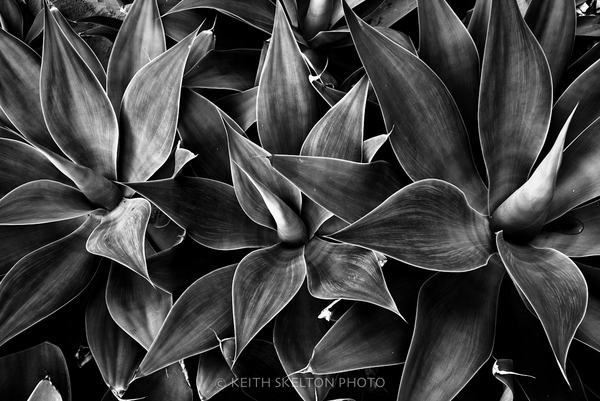 The burned forest is an example where it might seem impossible to come up with a decent composition let alone a visual statement because of the chaos and mid day light. By changing my angle, backlighting the trees, and isolating three elements, I have created a personal statement that is more powerful than the scene as a whole. The tree's branches look like arms reaching out for help. 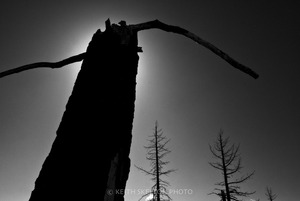 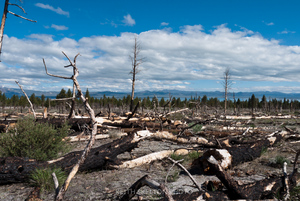 In the photo below I took advantage of the visual chaos by emphasizing the roots spreading over the fallen leaves as if they are reaching out for life. The contrasting colors of the blues and yellows help the composition. In the bottom photo taken at the Salton Sea I used the negative shape of the buildings and silhouetted the figure to make some visual sense out of a very chaotic place. Composition can be enhanced by placing light objects or shapes against dark areas and dark objects or shapes against light areas. 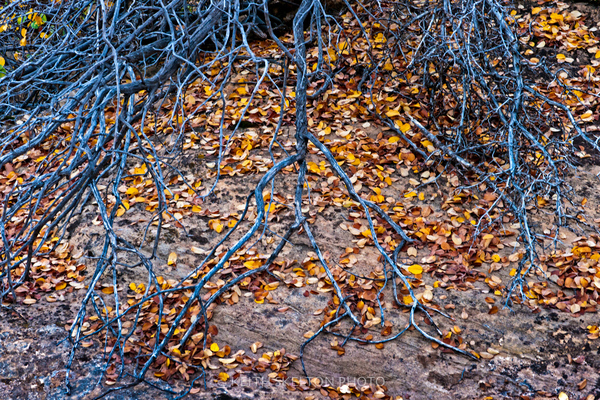 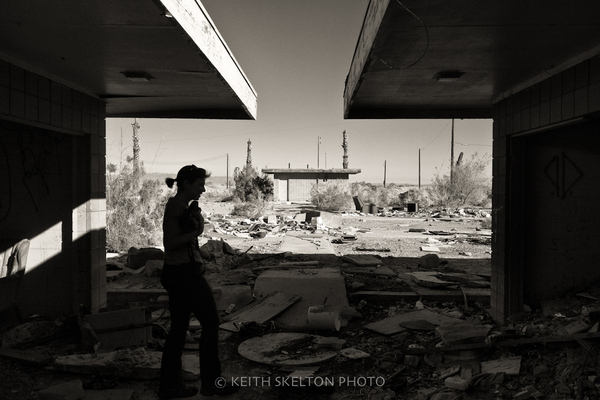 Visual balance in photography is an essential element of every good composition. It tends to be either formal or informal. Formal balance is associated with a central composition like architecture. Formal composition can project a feeling of rest, stability, or harmony. It’s very easy for the photographer to get caught up in this style, resulting in a collection of images that all begin to look the same. An informal or asymmetrical balance tends to have a more natural feel to it and is generally associated with nature photography. This can achieved in a landscape photography by effectively placing rocks, logs, or trees within a composition, using their irregularities to our advantage. Good composition skills takes years of practice. Look beyond the obvious and try to make visual sense out of what may seem chaotic at first glance. Two new and dynamic street photography classes this summer! June 25 -Santa Barbara's Summer Solstice. LINK HERE August 6th - Santa Barbara Old Spanish Days/Fiesta. LINK HERE A third street class will be in Los Angeles this fall: October 29 - Dia de los Muertos at The Hollywood Forever Cemetery. LINK HERE |
| SIGN UP FOR A PHOTO WORKSHOP! Santa Barbara County - May 21-22 The Alabama Hills - April 30 LA Nights - May 28 The Eastern Sierras - June 15-19 Slot Canyons and Monument Valley - August 10-14 Oregon Harvest Moon - September 8-12 |